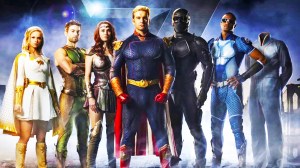This week, Marvel kicks off its Death of Wolverine event, which, as the title indicates, is expected to end with the death of one of the most popular heroes in comics, Wolverine.
Videos by ComicBook.com
Killing off a major comic book character is a fairly common practice these days, with Batman, Captain America, Spider-Man (both the Ultimate and the “mainstream” version), Human Torch, Aquaman and Damian Wayne/Robin being among those who were visited by the Grim Reaper over the past few years. In fact, it could be argued that the frequency in which main characters like Wolverine are being killed off (and resurrected within a year or two) has cheapened the overall impact of this plot device.
But then there are a handful of characters whose deaths have had a major impact on the comic book industry – either because they managed to stay dead for a considerable amount of time (or forever), or because their demise went on to play an influential role within their respective universes. This list examines the most important deaths in comic book history. Whether or not Wolverine’s end will someday warrant mention on a list like this remains to be scene, but judging from these 10 entries, Logan has some lofty shoes to fill (and die in).

10. Jean Grey
Death: X-Men #137
One of the original members of the X-Men, Jean Grey’s turn to the “dark side” in the 1980 storyline, “The Dark Phoenix Saga,” ends with her sacrificing her life and committing suicide in order to suppress the cosmic force that had overtaken her. Her death came at a time in the comic industry when killing characters was still not a common practice, leading to a number of readers being absolutely stunned when Jean willingly steps in front of that laser blast and dies. She would be later resurrected (and killed again), but for sheer shock value, Jean’s suicide remains one of the most iconic moments in Marvel history, especially since the “Dark Phoenix Saga” is considered the greatest X-Men story ever.
Adding to the moment’s legacy are some of the behind-the-scenes machinations that went into the decision to kill Jean. Reportedly, Marvel’s then editor-in-chief Jim Shooter was adamant about the fact that the Jean needed to be appropriately punished after an X-Men story depicted the character killing an entire planet while possessed by the Phoenix Force. The story’s creators, Chris Claremont and John Byrne, had originally written an ending to X-Men #137 where Jean would receive a lobotomy of sorts that would remove her psychic powers and the Phoenix force. Not satisfied with that conclusion, Shooter continued to push for Jean’s death until Claremont and Byrne relented.

9. Arthur Curry Jr.
Death: Adventure Comics #452
“Aquababy” (as he’s commonly known), was the son of Aquaman and Mera and was killed during 1977’s “Death of a Prince” storyline by David Michelinie and Jim Aparo. In the comics, Aquababy is captured by Aquaman’s nemesis, Black Manta, and is held in a glass bubble filling with air. Mantis forces Aquaman and Aqualad to fight each other to the death in order to free Aquababy. Aquaman manages to shatter the bubble holding his son, but finds that he acted too late, and the child dies.
While Aquababy wasn’t an iconic character on the level of a Captain America or a Batman, his death is considered a watershed moment for the comic book industry. At the time, many comics were already tackling darker, more mature themes involving death, drugs and racism, but the death of a child was essentially off limits. “Death of a Prince,” changed that and introduced a level of unpredictability in comics that remains to this day.

8. Barry Allen (The Flash)
Death: Crisis on the Infinite Earths #8
While DC’s landmark 1985 miniseries Crisis on the Infinite Earths was notorious for its high body count (in addition to the Flash, the series also killed off Supergirl and an untold number of people who lived on some of the parallel worlds that were destroyed by the Anti-Monitor), Allen’s death is arguably the most iconic and game-changing for its depiction of nobility and sacrifice. With the fate of Earth-1 at stake, Allen uses his super speed to create a vortex that sucks all of the energy out of the Anti-Monitor’s anti-matter canon. The Flash saves the universe, but dies in the process.
Adding to the intrigue surrounding Allen’s death was the fact that Crisis writer Marv Wolfman long-maintained that he left a loophole in the way Barry died that would allow him to be resurrected by a writer without a retcon. Still, it would take more than 20 years for DC to bring Allen back in full capacity, as his nephew Wally West continued on as the Flash following the events of Crisis. This demonstration of restraint by DC only added more value to Allen’s sacrifice, crystallizing it as the most memorable part of one of the company’s most important comic book stories of all time.

7. Bucky Barnes
Death: Avengers #4
The death of Captain America’s World War II sidekick Bucky would have likely ranked higher if this list had been published about a decade ago. But it certainly can be argued that the overall significance of Bucky’s tragic end was somewhat negated by his mid-2000s resurrection as part of the “Winter Soldier” arc (which was adapted as part of the Captain America: The Winter Soldier film).
Still, it’s hard to forget that dating back to Captain America’s 1964 resurrection in Avengers #4 (where we also learn about Bucky’s death), Barnes’s death was considered by most fans and critics as totally definitive and irreversible. Cap’s guilt over his inability to rescue his buddy from that booby-trapped plane was an essential part of the Red, White and Blue Avenger’s characterization for years. Meanwhile, while a resurrection had been teased a few times, Marvel never appeared willing to pull the trigger with Bucky. That’s why it was all the more shocking when Ed Brubaker and Steve Epting had the courage to bring Bucky back as a brainwashed KGB assassin (the fact that “Winter Soldier” was such a great story, was the icing on the cake).

6. Jason Todd
Death: Batman #428
Similar to Bucky Barnes, Jason Todd’s death during the 1988-89 “Death in the Family” arc by Jim Starlin, Jim Aparo and Mike DeCarlo was long considered by most fans to be untouchable and final … until DC did in fact resurrect Todd as the Red Hood in 2005. However, it’s the circumstances surrounding Todd’s death that make it the stuff of a legends and a watershed moment for the comic book industry.
After Todd was introduced as the second Robin in the early 1980s, readers had become increasingly unsatisfied with the character. By the late 1980s, Bat-book editor Dennis O’Neil thought he could generate fan interest by developing a way for them to influence the creative process. He came up with a plan to use a 1-900 number for fans to call and vote on an outcome in a specified story. Since Todd was so unpopular, Batman #427 ended with Robin being brutally beaten by the Joker and left to die in a building that was rigged to explode. Fans were then allowed to vote on whether or not Batman saved Robin.
According to the results of the phone vote, the majority of fans wanted Todd dead, so DC went ahead and published a story where Batman couldn’t rescue Jason in time. After the fact, O’Neil questioned the veracity of the poll, while other creators, including Frank Miller criticized the cynicism of killing a character via a fan vote.
As cynical as the stunt may have been, it was also undeniably memorable, and a key point in the history of the fan/creator dynamic.
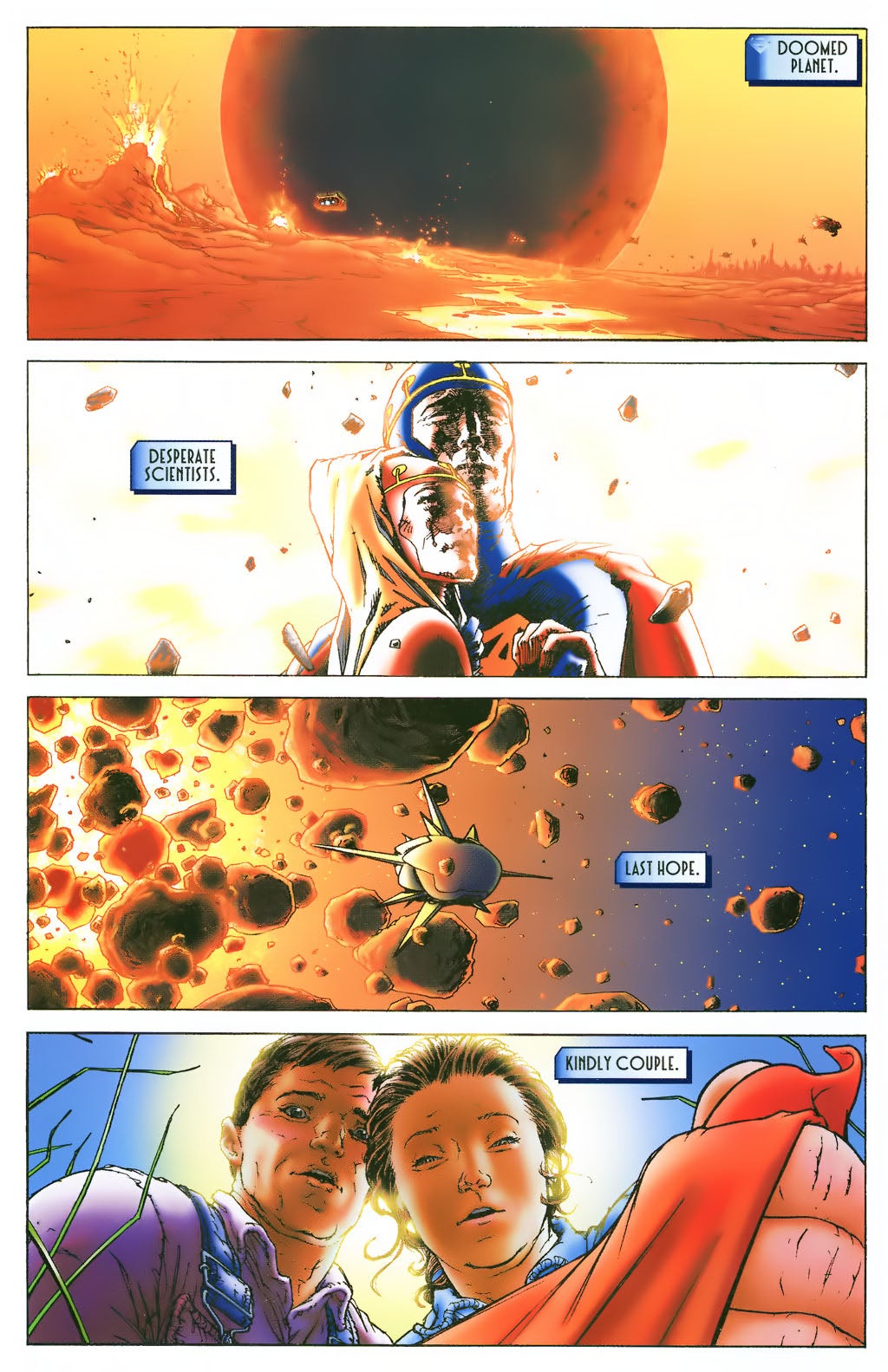
5. Jor-El and Lara
Death: More Fun Comics #101
Jor-El and Lara, the parents of the comic book industry’s very first superhero, Superman, famously sent their son Kal-El to Earth before their home world of Krypton was destroyed. While the characters are first referred to all the way back in Action Comics #101, it wasn’t until 1945’s More Fun Comics #101 that the characters were formally introduced (and their deaths were depicted). The story of their lives and deaths would continue to evolve over the years (with perhaps Grant Morrison/Frank Quitely’s ultra-efficient one-page origin rundown in All-Star Superman #1 serving as one of the greatest summaries of their lives ever).
Of course, depending on which version of their origin story you’re looking at, Jor-El and Lara are more plot devices than actual characters requiring emotional investment from the reader. Plus, Superman has had far more memorable moments with his adoptive earth parents, Ma and Pa Kent. But Jor-El and Lara, just by existing (before dying) still played an essential role in the most famous origin story in comics, which gives them such a prominent spot on the list.
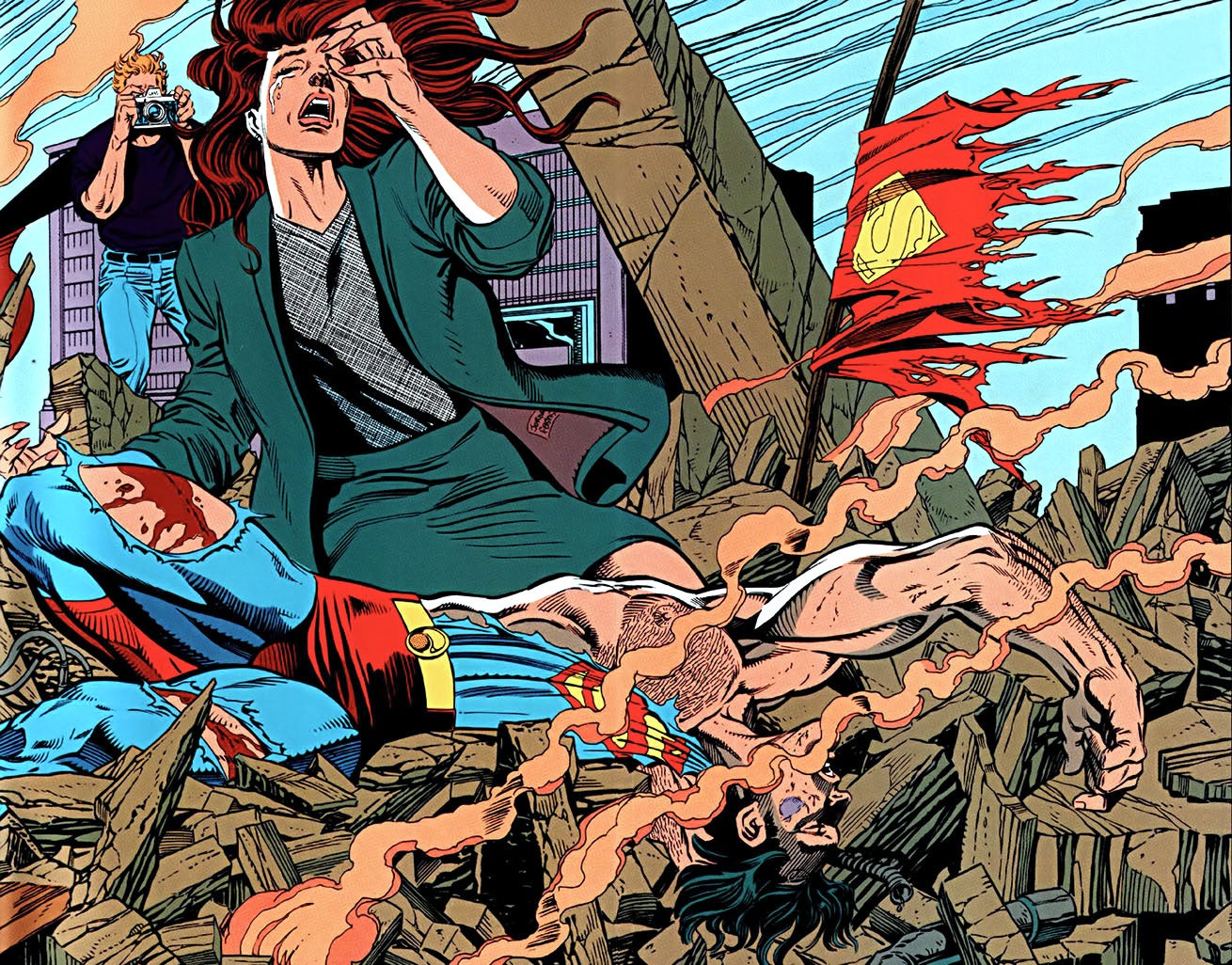
4. Superman
Death: Superman (vol.2 ) #75
While Superman’s 1993 death is far and away the shortest-tenured demise on this list, its importance to the comic book industry cannot be understated. “The Death of Superman,” for better or worse, defined an entire generation of comics. It’s a pitch perfect encapsulation of all of the bombast and excess that is now associated with the comic book industry in the 1990s – when sales and collector speculation ran so rampantly and unsustainably, the entire medium nearly imploded when the bubble burst midway through the decade. When DC announced they were killing Superman, this fictitious story was reported on mainstream news outlets as if a real person had died. Those black polybagged copies of Superman #75 sold by the million and were hoarded on the black market by speculators thinking their investment would yield huge returns in a few years. Some fans and critics argued that killing Superman was akin to the death of Uncle Sam and apple pie.
Despite all the hyperbole, Superman was resurrected in the comics less than a year later and the “Death of Superman” was (and continues to be) dismissed as a “stunt” by readers and critics. But that hasn’t changed the industry from going back to that well a number of times since. In the years immediately following Superman’s death, Batman was paralyzed, the Green Lantern went insane and became a murderer and Spider-Man was revealed as a clone. To this day, major (but briefly-tenured) comic book deaths like Batman, Captain America, Human Torch and Spider-Man (the Ultimate and mainstream versions) have been considered major news stories a la “The Death of Superman.”
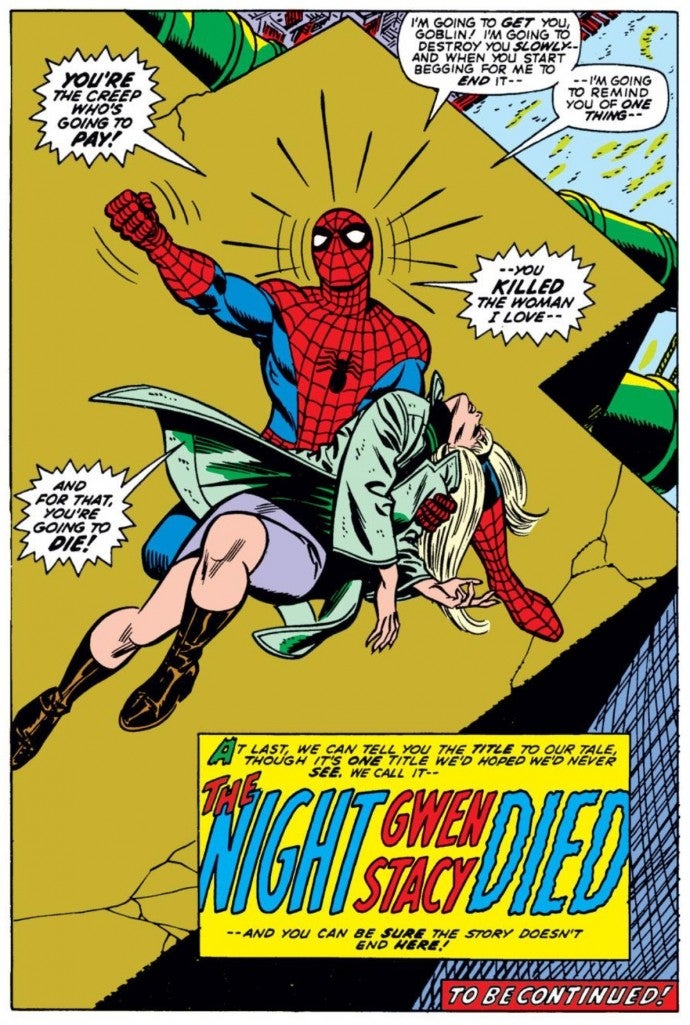
3. Gwen Stacy
Death: Amazing Spider-Man #121
When a character’s death is considered by most comic book historians and critics to be the end of an era for the medium, then you know that’s a really, really important death. The cover to 1973’s Amazing Spider-Man #121 by Gerry Conway and Gil Kane advertises the issue as a “turning point” with Spider-Man looking at a gallery of his friends and family saying that somebody close to him was going to die. Little did readers expect that that somebody was going to be Peter Parker/Spider-Man’s girlfriend Gwen Stacy. Gwen, who was first introduced in the mid-1960s, was thrown off a bridge (whether it was the Brooklyn Bridge or the George Washington Bridge has been a subject of debate for years) by the Green Goblin. When Spider-Man attempted to catch her with his webbing, her neck snaps. But was Gwen dead as soon as she was thrown off the bridge or did the hero actually kill the girl? Just one of the many things about this story that has tormented fans for decades.
More broadly, Gwen’s death has come to symbolize the end of “innocence” in comics. While the industry was transitioning to the darker, grittier Bronze Age by the early 1970s, most people recognize Amazing Spider-Man #121 as the definitive moment where things switch from Silver to Bronze. Before then, an innocent character had never been killed off before. And the fact that hero MIGHT have had a hand in an innocent’s death? Unheard of.
Conway has long-talked about the level of scorn, abuse and criticism he received from fans after the story ran. But he has long maintained that killing Gwen was a necessary evil in terms of freshening up the Spider-Man universe. In storyline terms, Gwen’s death has continued to haunt Spider-Man, even after his marriage (later annulled by the devil) to Mary Jane. Plus, Marvel has managed to keep the character dead all these years later – though a Gwen who portrays Spider-Girl in a parallel world is going to play a role in the upcoming “Spider-Verse” event.

2. Ben Parker
Death: Amazing Fantasy #15
Uncle Ben may not have actually said, “with great power there must also come great responsibility” (you can credit Stan Lee as the author of that mantra as it’s written as part of the narration in the final panel of Amazing Fantasy #15), but his death did directly lead to the creation of one of the world’s most famous and unique superheroes in Spider-Man.
Prior to the death of his uncle and surrogate father, Peter Parker used the strange new powers he acquired after being bitten by a radioactive spider to make money by performing on television. At one point after a show, a petty crook, being chased by a police officer, runs past Spider-Man. The cop asks Spidey to step in and tackle the guy, but he shrugs it off because it’s not his job to stop crooks.
In one of the most famous twists in comic book history, that crook Spidey neglected to stop ended up being the burglar who killed his Uncle Ben. And that’s when Peter had the revelation that because of his selfishness, his uncle was dead. From then on, Peter pledged to use his great powers responsibly, and thus Spider-Man, the superhero, was born.
Even after 50-plus years of stories that involved the death of other loved ones, clones, mystical divorces and having his brain-swapped with his adversary, Peter carries the guilt of his uncle’s death around with him. It’s the one moment that continues to motivate him and gives him the incentive to carry on as a hero.
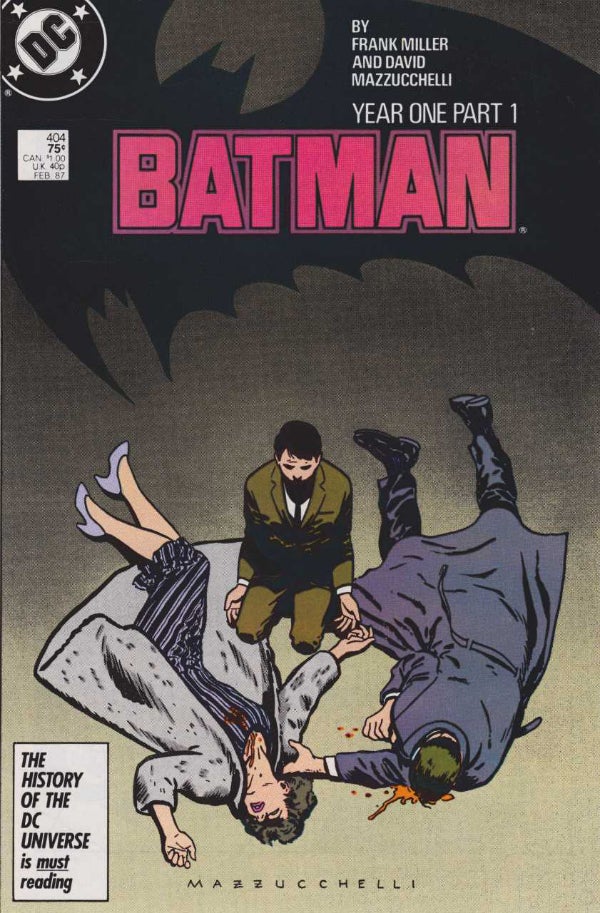
1. Thomas and Martha Wayne
Death: Detective Comics #33
Ask even a casual comic book reader what they know about Batman, and at some point this person will likely mention that his parents were murdered in front of him when he was a child. This casual fan may not know the names of Batman’s parents (Thomas and Martha), but their deaths are so intricately tied to the character’s mythos that the moment has become a pervasive part of the pop culture zeitgeist.
The Wayne’s deaths have been captured across various media, whether its comics, TV, film or video games. And while there are occasionally some nuanced changes to the story – Frank Miller adding a pearl necklace around Martha’s neck for “Batman: Year One” is considered a revelatory alteration to the origin – it is commonly accepted that the trauma a young Bruce Wayne experience when he saw his parents gunned down in front of him was what inspired him to become a vigilante defender of justice in Gotham City.
The impact Thomas and Martha’s murder had on Bruce was most recently touched upon again by Scott Snyder and Greg Capullo in their “Batman: Zero Year” arc. While this story reimagines many elements of Batman’s origins, the way Bruce’s parents’ murders are so intricately tied-in to Batman’s creation is mostly untouched, demonstrating that all these years later, it is the most important death in comics.








